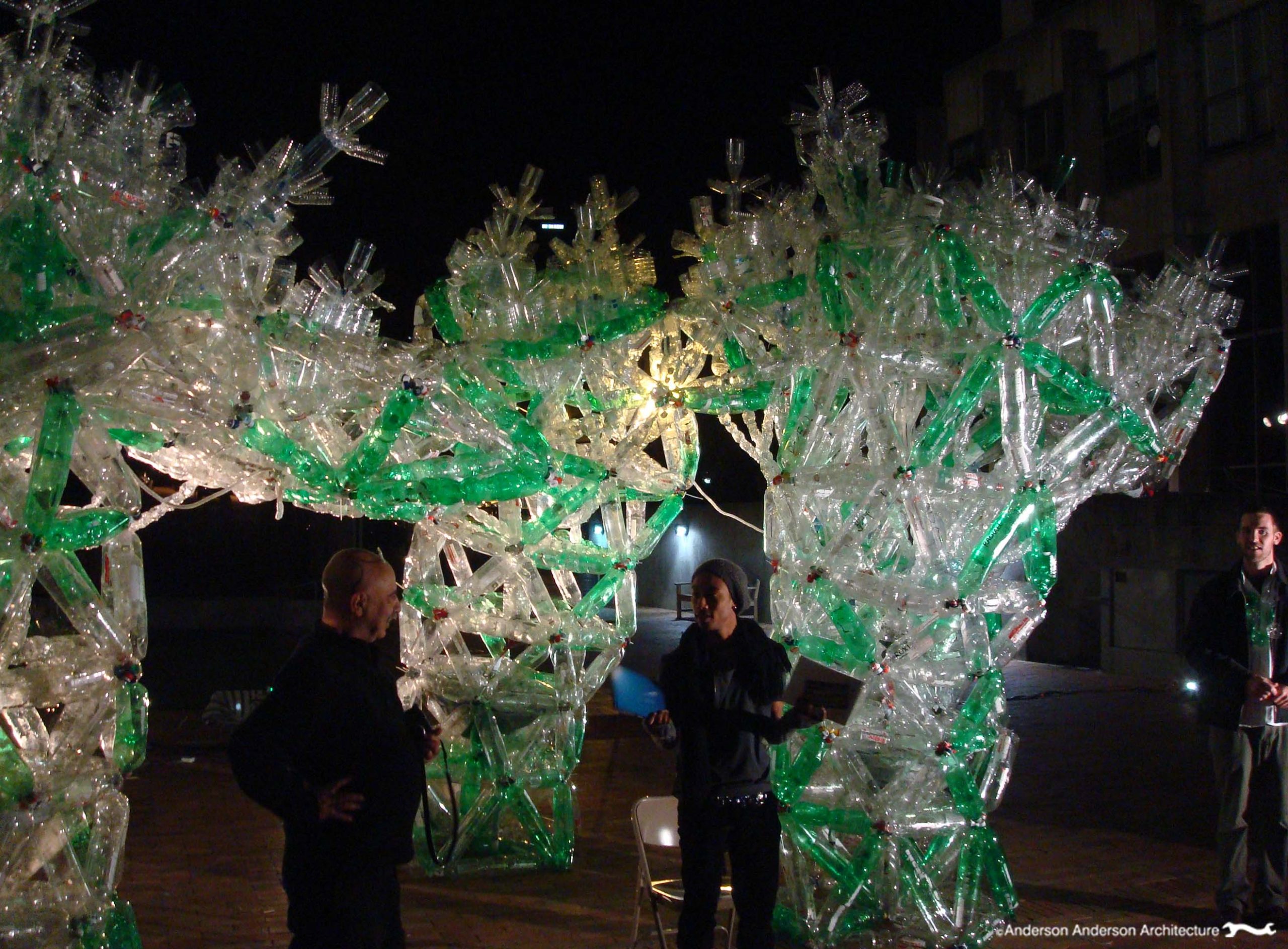ENORMOUS PLASTIC RAIN FLOWER
269 Urban Water Seminar, Fall 2009
University of California, Berkeley
Department of California
The business of architecture often attempts to justify its role in the economy by describing itself as a profession of efficient problem solvers. Although few clients believe this and actually bet their money on it, the concept still warps the profession in many ways. This is a complicated issue related to many questions of how to work as an architect in positive and meaningful ways. Designing our lives and working methods as creative architects is a much more complicated project than meets the eye. The real and perceived business role of the architect working within the construction economy is a background issue that haunts all architecture projects. We will not solve any of those questions in this seminar, but we will fight back against our powerlessness: we will build the biggest possible construction without spending a nickel, asking nobody for permission. According to popular economic theory, this will not do one good thing to help the economy—but we’re not buying that either.
EPRF
I have a plan. But since we are asking nobody’s permission, it also follows that you should feel free to deviate from my plan, or to throw it out altogether in favor of some more radical plan of your own making that is even more powerful and theatrical than every possibility that I am imagining. In either case our plan must be bold, spec¬tacular and effective. I would also like to stipulate that—fairly or unfairly—nobody gets hurt.
This is what I am thinking: EnormousPlasticRainFlower. We shall build an enormous plastic rain flower that will capture and purify drinking water from the sky. It will look ridiculous of course, and significantly so. Beautiful and grotesque, our flower will further serve as a wide-spreading public umbrella tree drawing people to gather under its shelter, protected from the sky’s harshness even while succored by its fruit. Like a flower blossoming from cow dung, this machine-flower of human sustenance will blos¬som from the fertile waste of excessive human consumption. Our flower will be constructed purely of plastic water bottles, sugared beverage containers, and other scrap plastic constructions, stitched together with screw-top cap bolts and structurally layered as translucent, crystalline pistils and petals funneling sunlight and rain drops into corded plastic stems of tuberous filtration drawing downward into threaded, clinging roots spitting small fountains of sweet rainwater sucked freely by passersby delighted by the novelty of drinking water cut free from intercontinental transport, commerce and cash. That’s it, simple and pure—one material, multi-purpose, full with questions and possibilities. How tall can this reach and how far can it spread? What will it look like and where might it grow? Did I mention that this is a seriously purposeful study in structure, construction and materials—EPRFTM, and all of that?


